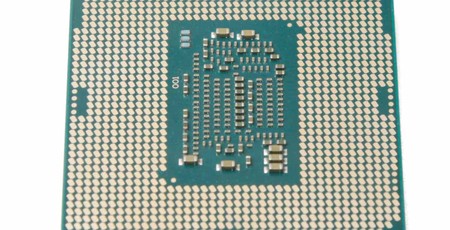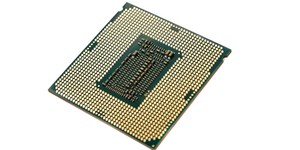
Overclocking
The benchmark here was our Core i3-8350K, which managed a fantastic 5.1GHz. Admittedly, that was using a just-tolerable 1.34V, but with it being a quad-core CPU, temperatures were within limits. With no iGP, we had hoped to see better results from the Core i3-9350KF, but even getting to 1.35V and fiddling with loadline calibration just in case didn't allow us to get above 5.1GHz without stability issues in extended load tests. In the end, we had to settle on 5GHz with a vcore of 1.32V, which while a good overclock, is a tad disappointing. As ever, the silicon lottery plays a part in these comparisons, so your mileage may vary.
Performance Analysis
At stock speed, the ability to boost to 4.6GHz on a single core and 4.4GHz across all cores meant the Core i3-9350K was significantly quicker than the Core i3-8350K in most tests. It shaved seven percent off the HandBrake encoding time and added five percent to the Cinebench multi-core test score and 13 percent to the single-core score - the latter hardly surprising given the new CPU enjoys a 15 percent boost frequency advantage. It was marginally quicker in Far Cry 5 and our synthetic 3D tests too.

However, the tables were turned once we switch to the overclocked scores, which see the Core i3-8350K jump ahead thanks to its 100MHz frequency advantage - not a night and day difference, but enough to leapfrog the newer, more expensive CPU where it had been in second place at stock speed.
The likes of the Ryzen 5 2600X and Ryzen 7 2700 retail for similar prices to the Core i3-9350KF, and in content creation they simply lay waste to the Intel CPU. The latter was a third quicker than the overclocked Intel CPU in HandBrake even at stock speed and more than doubled its Cinebench score. In games, it's once again title-dependant, but Intel still enjoys sizeable leads in some titles, although generally far smaller ones than AMD benefits from in multi-threaded tasks.
We should also mention power consumption, and to start with, the idle overclocked figures seem to be a feature of the latest EFIs catering for 9th Gen Intel CPUs, at least on our test motherboard. We simply report the figures after applying XMP and then plumbing in our vcore and multiplier, and for some reason this has seen the idle power draw sit around 90W compared to around 50W at stock speed. The same was true with the Core i5-9600K - we just thought we'd highlight this as something we now expect rather than there being an issue with the CPU.
Conclusion
When the Core i3-8350K launched in 2017, it was hailed as effectively a Core i5-7600K with a massive price cut and in many ways was one of the more successful Coffee Lake CPUs in the fight against first-generation Ryzen CPUs. Hitting those high frequencies for just £150 meant that for a pure gaming systems it was a great choice, especially as Z370 motherboard prices started to fall. Even now, the fact you can pick it up for less than £140 means that if frame rates are life, you have a low-end budget, and you're happy to play around in the EFI, getting a 5GHz quad-core is likely to be all you need for 1080p gaming, even with a powerful graphics card.
However, so long as Core i3-8350K stock remains and Core i3-9350KF price stays where it is, recommending the Core i3-9350KF isn't remotely possible, especially as our samples seem to point at there being no change in overclocking headroom. The new CPU is certainly quicker at stock speed thanks to the addition of Turbo Boost 2.0, but if you plan on staying at stock speed then the 6C/6T Core i5-9400F (£155) is clearly better (so long as you can find a compatible motherboard). We hope, like the Core i3-8350K, that the Core i3-9350KF's price will fall in the coming weeks, but at the moment, there are more attractive options in Intel's own ranks for dedicated gaming systems, while AMD is a far better bet if you need a more general-purpose CPU.

MSI MPG Velox 100R Chassis Review
October 14 2021 | 15:04








Want to comment? Please log in.